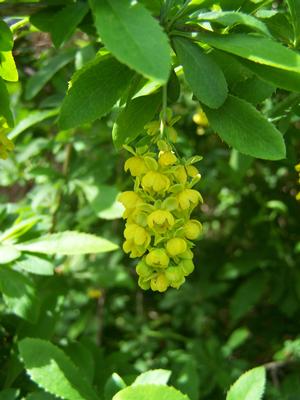View All Plants :: View All DECIDUOUS SHRUBS
Berberis canadensis
American Barberry
Plant Type:
DECIDUOUS SHRUBSBerberis canadensis – Yes, it is a fact: there exists a southeastern North American native barberry! As with so many Asian species and New World counterparts, both can be traced back to common ancestry. This species, rare in the trade, is more collector plant than ornamental. It would make a good filler shrub at woodland’s edge in a naturalistic setting or as a collector’s arboretum subject. It does sport pretty good muted russet fall color, has yellow spring flowers and sets small red fruits at the branch tips in late season. Berberis canadensis is endangered in many locations. We’re trying to keep it going! Our one isolated subject in the landscape has produced has produced scant seed. In an important sidenote: research has apparently determined that this species actually is apparently a host plant for wheat rust as had been assumed for a very long time. In that, we urge customers who live in regions where wheat is an important crop not to consider this shrub. Site Berberis canadensis in full sun to half shade planted in fertile soil. Cutting grown.
Characteristics and Attributes for Berberis canadensis
Season of Interest (Flowering)
- Spring
Season of Interest (Foliage)
- Autumn
Interesting Bark
- Barbed
Light
- Morning Sun / Afternoon Shade
- Full Sun
Attributes
- Hedge
- Natural Garden
Growth Rate in the Garden
- Medium
Soil
- Draining
- Fertile
Origins
- Southeastern U.S.
Propagated By
- Cutting Grown
Genus Overview: Berberis
There are many terrific barberry species. In fact, nearly all are not a weed problem. The following are a handful of member of the genus that have proven worth and muster in northeastern Connecticut, both in utility and multi-season beauty. Some are virtually evergreen, others have wonderful autumn foliage colors and the berries range in varying colors - from blue with a whitish bloom to bright crimson. All are cutting grown. And one is a north temperate New World plant,,, yes, there are North American native barberries.


